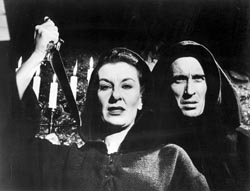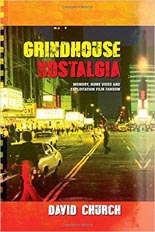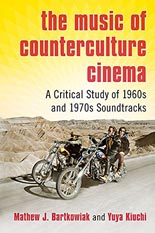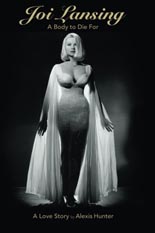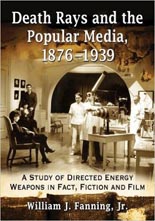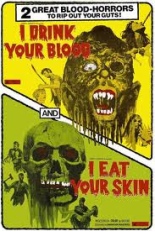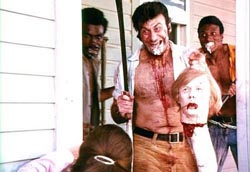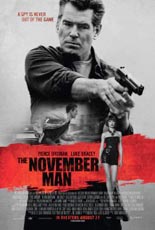
 The November Man is not a sequel to The January Man, for all three of you who remember that failed Kevin Kline vehicle of 1989. Casting aside source material for the moment, the reason The November Man is called The November Man isn’t even revealed until the film’s penultimate scene, yet the explanation is so passively delivered and decidedly inconsequential that viewers will think, “That’s it?” In the same exchange, Pierce Brosnan’s ex-CIA character is given another nickname — one that actually makes sense and has the virtue of being a better title, if the MPAA ever would allow it, which it would not: “one bleak motherfucker.”
The November Man is not a sequel to The January Man, for all three of you who remember that failed Kevin Kline vehicle of 1989. Casting aside source material for the moment, the reason The November Man is called The November Man isn’t even revealed until the film’s penultimate scene, yet the explanation is so passively delivered and decidedly inconsequential that viewers will think, “That’s it?” In the same exchange, Pierce Brosnan’s ex-CIA character is given another nickname — one that actually makes sense and has the virtue of being a better title, if the MPAA ever would allow it, which it would not: “one bleak motherfucker.”
Just close your eyes and hear the trailer’s announcer in your head: “This summer … Pierce Brosnan … is … One Bleak Motherfucker!” On the conservative end, the box-office take would have doubled.
 Not playing James Bond here but a suave secret agent all the same, Brosnan is Devereaux, temporarily lured out of retirement to extract a fellow operative (Bosnian actress Mediha Musliovic) from her undercover post in Moscow, where she’s surreptitiously gathered incriminating intel on the war-criminal past of Russia’s presidential hopeful Federov (Lazar Ristovski, 2006’s Casino Royale). The female agent also happens to be Devereaux’s former lover and the mother of their child, so if you think he’ll swoop in and succeed, let me welcome you to the world of espionage thrillers! You’re gonna have a blast!
Not playing James Bond here but a suave secret agent all the same, Brosnan is Devereaux, temporarily lured out of retirement to extract a fellow operative (Bosnian actress Mediha Musliovic) from her undercover post in Moscow, where she’s surreptitiously gathered incriminating intel on the war-criminal past of Russia’s presidential hopeful Federov (Lazar Ristovski, 2006’s Casino Royale). The female agent also happens to be Devereaux’s former lover and the mother of their child, so if you think he’ll swoop in and succeed, let me welcome you to the world of espionage thrillers! You’re gonna have a blast!
But with The November Man, expect the equivalent of a Dr Pepper can shaken violently before being dropped on the kitchen tile. Impact is lessened by a convoluted plot (based on the late Bill Granger’s 1987 novel There Are No Spies, book seven of 13 in his Devereaux series) that directly pits our 60-something hero against his one-time protégé (a flat Luke Bracey, 2015’s Point Break) and has him enlist the aid of a smokin’-hot Chechen refugee (Olga Kurylenko, Quantum of Solace) seeking revenge on Federov herself. These are two of the story’s three driving forces, but that only becomes evident after the introduction of so many characters — and their various subplots — that ultimately emerge no further than the periphery; you’re left not knowing to whom you should or should not pay attention.
Old pro Roger Donaldson used to craft these stylish thrillers in his sleep: 1987’s No Way Out, 1992’s White Sands, 1995’s Species. All of those works are agile and highly competent, if not particularly lasting. The November Man is the same — just with a noticeable limp in its step.
Aging incredibly well, Brosnan is top-notch, with nary a nod nor a wink to the cheekiness of his 007 days. Gritting his teeth and tasting the blood, Devereaux is both phenomenal and fallible. I just wish this film — a faint attempt to launch a franchise — were less of the latter. —Rod Lott

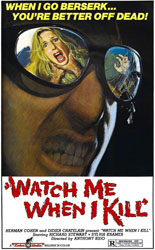
 In
In 
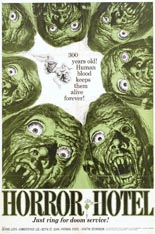
 When is not a good idea for a comely college co-ed (Nan Barlow,
When is not a good idea for a comely college co-ed (Nan Barlow, 